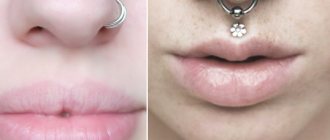Aesthetic, firm and symmetrical breasts are an invariable attribute of femininity and attractiveness. Often the volume or shape of this part of the body does not suit its owner, and sometimes even becomes the reason for the development of psychological complexes. Medical specialists are ready to help anyone who wants to change their appearance once and for all and get rid of visual imperfections.
We will offer each patient the most modern correction techniques, attentive and responsible attitude. You will be able to achieve flawless results and be proud of your body in no time.
Features of installing a breast implant under the muscle
Placing an implant under the muscle is called the submuscular implant placement technique.
It is possible to achieve maximum aesthetic effect with minimal complications by partially placing the implant under the muscle - approximately 2/3.
A complete submuscular placement of the implant results in an unnatural appearance of the breast in the lower part due to the placement of the implant above the lower fold of the gland. In addition, the volume and height of the operated breast are poorly expressed due to the density of the pectoral muscle. Full installation of an implant under the muscle is especially not recommended for women who are actively involved in sports.
Installing an implant under the muscle:
- basic methods of installing breast implants during mammoplasty;
- benefits of installing a breast implant under the muscle;
- what the surgeon needs to consider when installing an implant under the muscle.
Breast augmentation in Russia
In Russia and Eastern Europe, patients ask for the volume to be reasonable, so that it looks quite natural, the breast size should fit the figure. And in this case, installation under the gland will not be suitable; it will be necessary to place it under the muscle so that the implant is not visualized and the breast has the most natural shape possible.
There is also the opinion of patients, and even doctors, that installing implants under the muscle does not give anything at all. Because by installing an implant under the muscle, the surgeon damages the muscle: when an incision is made into the pectoralis major muscle, for example, from below, the muscle goes upward, i.e. rises to a fairly large distance. Thus, muscle function is lost, or at least impaired.
Basic methods of installing breast implants during mammoplasty
At the stage of preparation for mammoplasty, the surgeon must determine a large number of factors that decide which implant installation option is optimal. There are three main methods for installing breast implants:
- subglandular location of the implant: can be used if the mammary gland is sufficiently dense and pronounced in volume, when it is sufficient to uniformly cover the entire implant;
- full muscular coverage of the implant implies the formation of a single coating, which allows not to destroy the pectoralis major muscle and preserves all lines of fascia, including the axillary one;
- installation of an implant under the muscle and under the gland: also used for those patients whose mammary gland is quite well defined, otherwise the result of the operation threatens to be short-lived.
How is breast augmentation surgery performed?
It all depends on how to lift this muscle.
The muscle fibers are attached from above the clavicle from the inside to the sternum and from below to the costal arch. The implant should be located under the pectoralis major muscle. The implant is inserted through a small hole under the breast. If a muscle is roughly cut off, of course, it can contract and rise, and this is extremely undesirable. But if the muscle fibers are carefully separated from below, an implantation pocket is formed under the pectoralis major muscle, and then the muscle actually remains in its place, without moving anywhere. In this case, the mobilization of the pectoralis major muscle is carried out correctly.
Benefits of having a breast implant placed under the muscle
The main advantages of installing a breast implant under the muscle include:
- natural appearance of the upper chest, due to the fact that the pectoral muscle hides the upper edge of the implant;
- minimal risk of capsular contracture, which spoils the appearance of the operated breast and causes pain in the patient;
- minimal risk of “waves” and “ripples” on the breast skin after implant installation;
- almost complete impossibility of palpating the implant after its installation;
- the ability to take clear images of the breast when performing mammography.
What are the methods for installing implants?
Many people have heard that there is a method for installing implants in two planes. In fact, this method is no different from installing implants under the pectoralis major muscle, the only difference is that the pocket is made in this way: first, an incision is made under the mammary gland and the gland tissue is separated above the pectoral muscle, thus forming a pocket in the first plane (under the gland). The level of this pocket, depending on the degree of ptosis of the gland, can be from 2-3 cm above the inframammary fold to the upper edge of the areola. Then a full-fledged pocket is formed in the second plane under the pectoralis major muscle. That’s why the method of creating an implantation pocket in two planes is called.
In fact, this is the same submuscular implant placement discussed above. The only difference is that the gland is mobilized slightly higher, not just 2-3 cm away from the submammary fold, but up to the level of the areola. This is done so that the surgeon has the opportunity to move the tissue, both the pectoralis major muscle and the gland, relative to the implant. This allows you to achieve maximum natural breasts after surgery. This is a more advanced method.
I think the opinion that with the two-plane implantation method the pectoralis major muscle is cut off almost to the middle, and only the upper part is covered by the muscle, is at least not entirely true.
What the surgeon needs to consider when installing an implant under the muscle
There are some important points that a plastic surgeon must take into account when performing mammoplasty with the installation of a breast implant under the muscle:
- the technique can be used in cases where the patient has intact pectoralis major muscles;
- the method does not eliminate mastoptosis, and therefore is recommended for patients only in combination with a breast lift;
- installing an implant under the muscle implies a longer rehabilitation period than with other methods of mammoplasty;
- The use of anatomical drop-shaped implants for installation under the muscle is not recommended;
- The use of polyurethane or acrotextured fixation implants is strictly prohibited.
Installing an implant under the muscle is an effective method of breast enlargement and improving its shape and appearance.
Careful and strictly individual selection of mammoplasty techniques will allow you to achieve maximum results with which the patient will be satisfied.
Share:
conclusions
Now you know the main methods of installing breast implants, each of which has its own pros and cons, each has its own indications and contraindications.
To decide on the option of installing implants, you need to come for a consultation, weigh the pros and cons, tell the surgeon about your wishes and make a decision based on this.
Installation of an implant under the mammary gland (subglandular or submammary) is one of the most common methods of placing an endoprosthesis to create a new shape and increase the size of the breast. In this case, the implant is fixed in the area above the pectoralis major muscle behind the breast tissue.
The method of placement of endoprostheses is selected not only depending on the preferences of the plastic surgeon and the patient’s wishes for the future result of the operation, but also based on the individual characteristics of the anatomy of her breast structures, proportional parameters and the initial size of the mammary glands.
Many surgeons advise installing an endoprosthesis under the mammary gland, as they see this method as having many positive aspects and advantageous features. Firstly, subglandular placement of implants is the simplest method from a technical point of view. As a rule, the surgeon does not have any difficulties with this type of placement of the endoprosthesis.
Secondly, this type of placement is quite universal: it will fit almost any breast implant size. However, it also has many disadvantages that you need to be aware of if you decide to undergo surgical breast augmentation through implantation.
Today, plastic surgeons practice several safe ways to place endoprostheses when performing augmentation mammoplasty:
- subpectoral method of location
, in which the implants are partially located under the gland tissue, partially under the muscle; - submuscular method of placing
the implant under the muscle; - subfacial method of placing
the implant under the fascia above the muscle.
The photo shows for comparison all the main methods of placing an endoprosthesis to increase the size and correct the shape of the breast.
To decide on the method of installing implants, the surgeon needs to conduct an examination, carefully study the external condition of the patient’s mammary glands, determine whether there are signs of ptosis (sagging) of their tissues, and whether there are indications for a combined operation (breast augmentation and tightening). The specialist must find out which method of implant placement will be most optimal for a specific individual case.
If the endoprosthesis is fixed under the pectoralis major muscle, the risk of developing capsular contracture is usually lower, however, with this method of placement it is not always possible to avoid contouring the edges of the endorosis. In addition, this method is one of the most traumatic.
Submammary placement of breast implants is usually recommended if the following indications exist:
- if the patient plans to enlarge her breasts by several sizes
and wants to place large-volume implants (however, this method can be used for small endoprostheses too); - if a woman has mild ptosis of
the mammary glands (with subglandular installation of an endoprosthesis, it is possible to obtain a slight breast lift effect, however, it should be taken into account that severe ptosis will require a full surgical lift in combination with breast augmentation); - if a woman leads an active lifestyle
, plays sports with significant strength loads, for which other methods of placing implants may not be suitable; - if it is very important for the patient to recover faster after breast augmentation surgery
(if the surgeon places an implant under the mammary gland, he will not have to excise the pectoralis major muscle, which will help to significantly reduce the recovery time).
How is an implant placed under the mammary gland?
The operation is performed under general anesthesia for 1.5-3 hours. The plastic surgeon makes preliminary marks on the patient's chest, the location of which will depend on the type of surgical approach. A breast endoprosthesis can be installed through an incision along the lower line of the areola (this method is commonly called periareolar).
Photos showing types of surgical access:
Also, some specialists prefer to make an incision in the fold in the area under the breast (the method is called submammary access). The most modern type of access, used more often recently, involves an incision in the armpits and is called endoscopic. It is usually used in patients with small initial breast size. Its advantage is invisible scars.
However, other types of access also remain relevant. For example, surgical access in the crease under the breast is often chosen when specialists place large implants. In the absence of ptosis, when breast tissue begins to sag with age or after prolonged lactation after childbirth, the areolar type of access is often used.
The photo shows the process of a plastic surgeon during an operation using the submammary method:
Effect after installation of implants under the mammary gland
By installing an implant under the mammary gland, you can get beautiful breasts of any desired size. This method of placing the implant allows you to choose any shape of endoprostheses: round or teardrop-shaped (anatomical).
Many patients who observed slight breast ptosis before surgery later noticed that this type of implant placement makes it possible to slightly lift the breasts, making them visually not only large, but also elastic.
However, the method will not cope with severe manifestations of ptosis. In this case, the plastic surgeon will recommend breast augmentation at the same time as a breast lift.
Photos before and after surgery using the submammary method of placing an endoprosthesis:
Advantages of installing an implant under the mammary gland
- If breast implants were installed under the gland, rehabilitation after surgery will be faster and easier
. The fact is that during surgery the pectoralis major muscle is not affected or injured, since there is no need to dissect it. This ensures a comfortable and quick recovery with minimal pain and risks of complications. - Simple technique.
It is usually much easier to place an endoprosthesis under the gland than under the fascia or muscle. This eliminates the risk of complications and surgical errors, since the implant installation technique itself in this case is very simple and elementary for an experienced specialist. Although, of course, this is not a reason to abandon other methods of implant placement, because they are also quite effective and relevant in certain individual cases. - Possibility to choose any implant size.
With some methods of implant placement, there are limitations due to which it is impossible to choose a large endoprosthesis size. If the implants are fixed in this way, the patient can choose any type of endoprosthesis. - Possibility of eliminating mild ptosis.
Ptosis (or sagging) of breast tissue is an aesthetic problem that can be caused by certain anatomical features of its structure, in which the nipples are lowered down. But most often, ptosis develops with age, when, under the influence of changes in the body, the natural elasticity and firmness of the gland is lost. In this case, ptosis is always accompanied by sagging and the appearance of wrinkles. After lactation (breastfeeding), ptosis also often develops. If it is mild, implants installed under the mammary gland will help correct this due to a slight lifting effect. - Low risk of implant deformation.
With an active lifestyle, sports, fitness, and gymnastics, frequent contraction of the pectoral muscles occurs, which may result in deformation or contouring of the endoprosthesis. It becomes noticeable in certain body positions and poses. If it is located subglandularly, such a risk is practically impossible. The mammary gland looks natural and does not move anywhere even with regular training. That is why this option for implant placement is often recommended to female athletes.
Disadvantages of installing an implant under the mammary gland
- Difficulty in certain types of diagnostics.
All implants, regardless of their type of material, internal filler, texture, size and shape, in one way or another impede a full, reliable diagnosis, as they reduce the effectiveness of fluorography, mammography, lung radiography, and ultrasound examination of the mammary gland. However, experts believe that it is precisely this type of location, when the implant is fixed under the gland, that makes the study more difficult. It is more difficult for a doctor to see and evaluate the condition of the gland tissue if there is a breast implant inside. - High risk of developing ptosis.
If the tissue turgor is insufficient, the iron will sag, because the implant is supported in this type of arrangement only by these tissues and skin. Under their own weight, the breasts will become saggy over time. Therefore, in this case, you will have to correct the situation through a surgical tightening method. - High risk of capsular contracture formation.
It is believed that if the implant is positioned in this manner, the risk of capsular contracture will be slightly higher. Capsular contracture is a complication in the form of dense fibrous tissue that resembles a capsule in appearance. This phenomenon is a normal reaction on the part of the body, but its severe forms are difficult to treat and bring a lot of unpleasant discomfort. - Slight risk of contouring.
The implant can be visualized and palpated if the patient did not have enough tissue to begin with. The problem in this case can be avoided if you choose a small-volume implant. - Risk of breast ripples.
Rippling or wrinkling of the breasts looks strange and unnatural. Such a postoperative defect is possible with excessively thin breast skin and insufficient volume of the mammary glands. The implant becomes noticeable due to the fact that its edges stand out. They appear especially clearly during sports and in certain body positions. - Possible development of breast asymmetry.
One of the most common complications of such an operation using this method of endoprosthesis placement is the risk of asymmetry. This is due to the fact that all paired organs initially have mild asymmetry. In some women, breast asymmetry may be more noticeable, but placing identical implants may worsen the problem. - Risk of loss of nipple sensitivity.
Some patients note that with this type of placement of the endoprosthesis, the nipples lose sensitivity. This may be due to blocked nerve endings or increased breast swelling. As a rule, this side effect goes away on its own after surgery. But sometimes it can persist for a long time. Additional consultation with a doctor is required.
We should also not forget that there are contraindications for breast augmentation surgery, regardless of the choice of the method of placement of the endoprosthesis and the type of surgical approach. The operation cannot be performed for diabetes mellitus, various diseases of internal organs in the acute stage, and sometimes in chronic form too.
Breast augmentation is not performed on patients with blood clotting disorders or large breast tumors. If a girl is pregnant or going through the postpartum period and is breastfeeding, surgery will be permissible a little later. It is also prohibited for those who have not yet reached 18 years of age.
There are many factors to consider when deciding how to place an implant. Depending on your breast size, as well as the result you want to achieve. The implant can be installed under the mammary gland or under the pectoral muscle. Each method has its own advantages and disadvantages.
The implant is located under the mammary gland above the pectoral muscle. This allows the use of larger implants and shortens the recovery period, since muscles are not injured. However, this method has its disadvantages:
– the implant is easily identified by touch; – it is difficult to achieve a clear image during mammography; – the breasts after surgery do not look entirely natural; – there is a high risk of fibrocapsular contracture – the formation of dense fibrous tissue around the implant.










